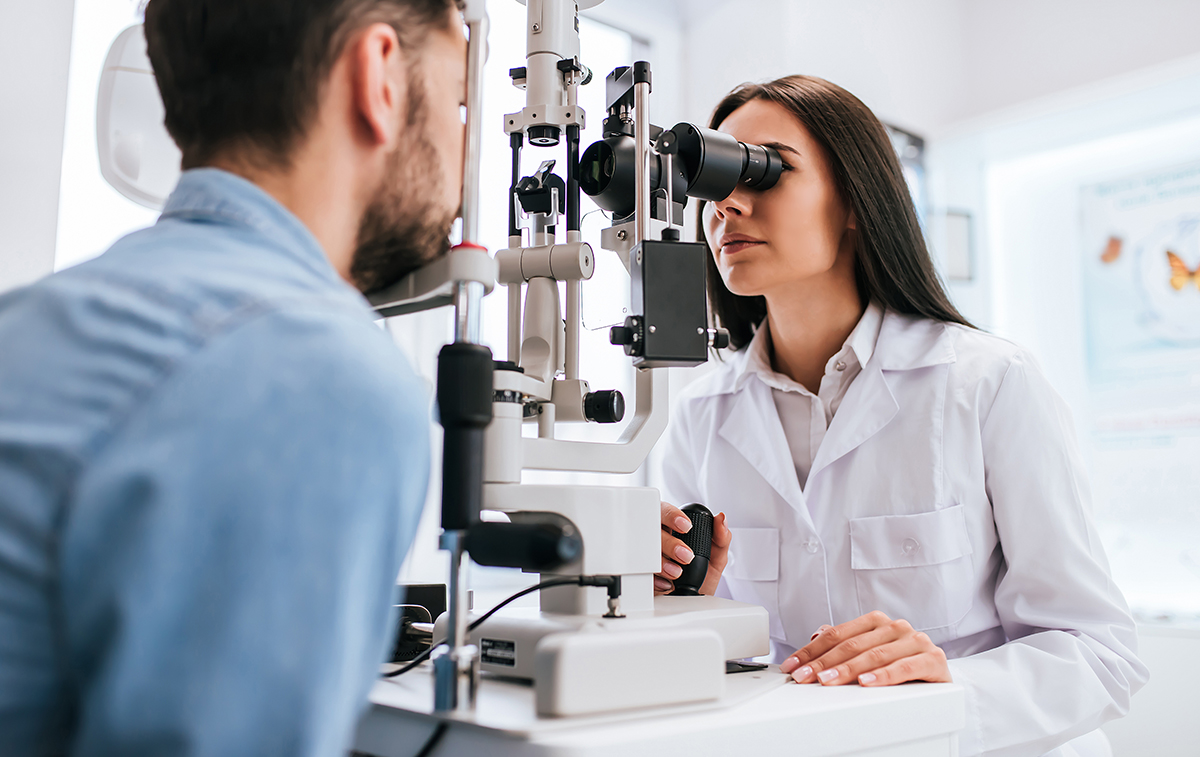
Many people with glaucoma don’t know they have it yet because 95% of cases are asymptomatic until vision loss. There are often no obvious signs of this eye disease until your side vision is permanently damaged, which is why eye exams are crucial. Vision impairment from glaucoma typically happens due to high intraocular pressure (IOP) that damages the optic nerve, and there’s no way to recover it. For these reasons, glaucoma is known as the “silent thief” of eyesight.
It’s essential to have annual eye exams to diagnose glaucoma early. Wiles Eye Center offers comprehensive glaucoma management and treatment, and our ophthalmologists use various tests during comprehensive exams to identify glaucoma and other eye diseases.
What Is Glaucoma?
Glaucoma is a type of eye disease that includes a group of conditions that damage the optic nerve, often due to high IOP. The optic nerve is a crucial connection between the brain and the eyes, and once the optic nerve is damaged, it can’t be fixed. The longer eye pressure increases, the more damage the optic nerve may sustain. Patients may experience tunnel vision and missing patches in their peripheral (side) vision. Left untreated, high IOP can deteriorate the optic nerve, causing permanent vision loss or blindness.
Severe forms of glaucoma, such as acute closed-angle glaucoma, cause symptoms such as nausea, vomiting, headaches, red eyes, blurred vision and severe eye pain. This is a medical emergency that requires prompt treatment to prevent vision impairment.
How Is Glaucoma Detected During Eye Exams?
Our ophthalmologists perform various tests during comprehensive eye exams to examine the optic nerve, visual field, eye pressure and other aspects of eye health. These appointments are recommended yearly, especially for people with risk factors, such as a family history of glaucoma.
Some of the diagnostic tests for glaucoma include:
- Air Puff: The air puff test uses a plume of air to calculate the resistance from your eye and determine the eye’s internal pressure.
- Goldmann Tonometry: Also called a blue light test, this part of an eye exam uses numbing eye drops and a slit lamp biomicroscope to examine the cornea with a flat-tipped probe.
- Tonometer: This test also requires numbing eye drops for comfort as the doctor gently touches the eye with a tiny device that measures pressure resistance and internal eye pressure.
- Optical Coherence Tomography: The OCT scan is a computer-based diagnostic tool that’s non-invasive. The technology breaks down retina images into cross-sectional and color-coded regions to detect eye diseases, including glaucoma. A laser captures high-resolution images to locate ocular damage or tissue changes.
- Visual Field Test: This diagnostic test creates a computerized map of your visual field to measure your side vision and detect abnormalities in your eyesight.
- Angle Exam (Gonioscopy): This part of an eye exam looks at where the cornea (transparent outer layer of the eye) connects with the iris (the pigmented portion of the eye). This angle involves your eye’s drainage system and is a significant component of glaucoma diagnosis and progression. Our eye doctors touch the cornea with a special lens to see if the drainage angle is open or closed.
Our eye doctors may also take a corneal thickness measurement to establish risk factors for glaucoma. We will discuss the findings of your eye exam right after your appointment and your treatment options. We offer medicated eye drops, laser procedures, and minimally invasive glaucoma surgery (MIGS). Wiles Eye Center also provides Durysta, the first implantable medicine approved by the FDA for open-angle glaucoma.
Schedule a comprehensive eye exam at Wiles Eye Center in St. Joseph, Missouri, at (816) 279-7015 or Kansas City, Missouri, at (816) 455-2020.

Comments are closed here.